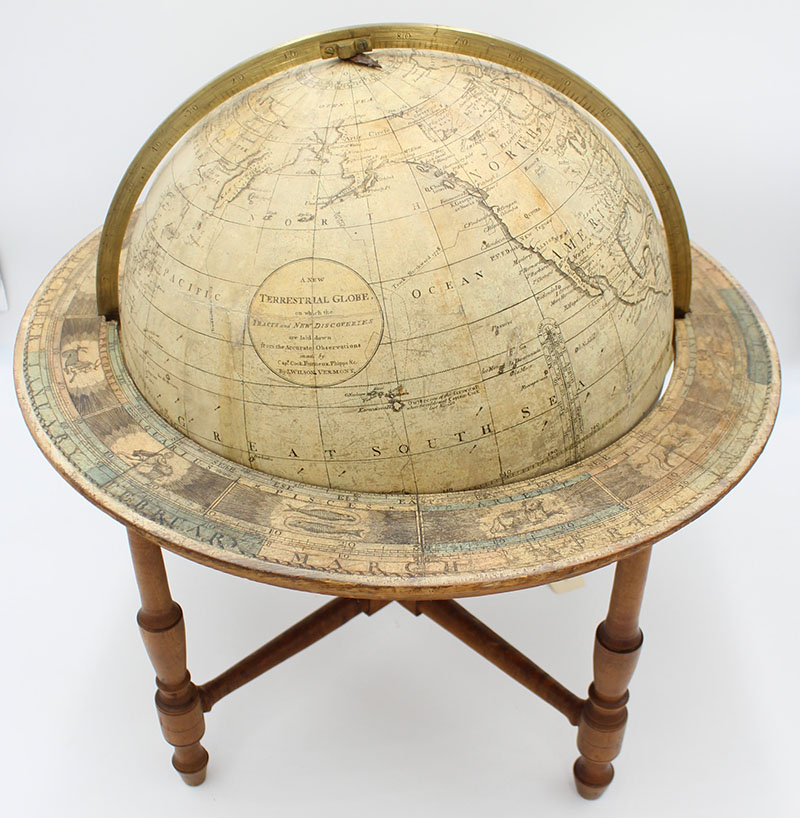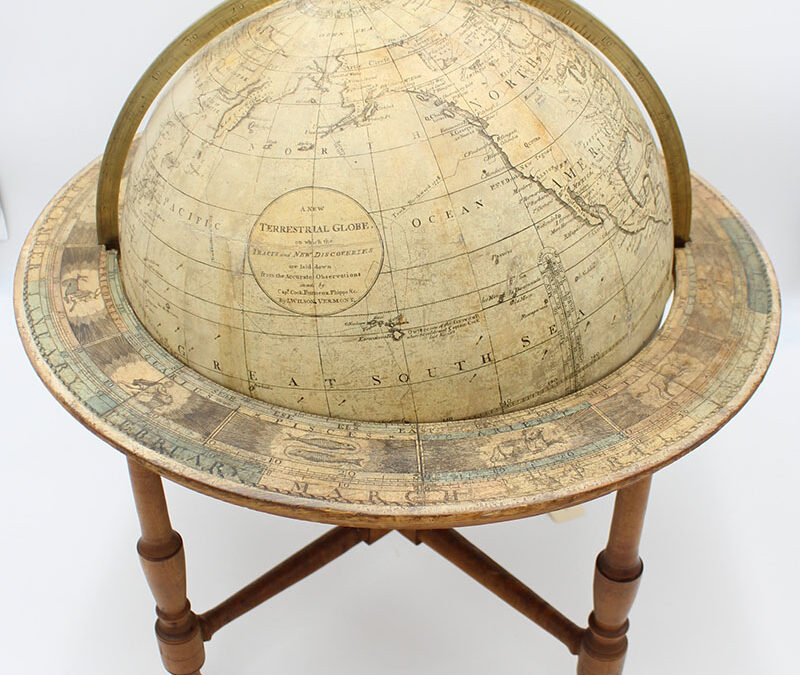A New American Globe

| Maker | James Wilson |
| Date of Creation | 1810 |
| Location | Bradford, Vermont |
| Materials | Wood, metal, papier-mache |
| Institution | Vermont Historical Society |
| Credit Line | N/A |
| Accession Number | 1921.16 |
| Photo Credit | Courtesy of the Vermont Historical Society |
Although James Wilson’s globes have often been described as the first made in America, they were in fact the first manufactured for sale—a by no means inferior accomplishment. Wilson is reputed to have seen his first globes at Dartmouth College in the 1790s, and he spent close to two decades perfecting a replicable product. The Vermont Historical Society’s earliest Wilson globe dates from 1810 and is one of only four from that year that still exist. It represents Wilson’s first finished product, available locally to wealthier Vermonters and produced entirely at his farm in Bradford. Recent scholarship has complicated the myth of singular obsession. From surviving correspondence and records, he taught himself skills as wide-ranging as engraving, ink-making, geography, paper-making, wood-turning, and plastering, and then modeled his skills to others so that they could make globes at scale. By 1817, he had moved production from his small farm workshop to a factory building in Albany, NY, and several of his sons joined in the enterprise. At a time when globes could only be imported from Europe at great expense, Wilson’s new company produced an inexpensive American-made product. The result was a huge expansion of globes as teaching tools in classrooms. Wilson leaned into the perceived virtues of using American products to teach American students, emphasizing education in line with the ideals of the new republic. Although the company passed out of the Wilson family’s hands by 1830, James retained the curiosity and energy that had driven his globe experiments for the rest of his life. At nearly 90 years old, he built orreries, models of the solar system, for his family and a handful of local schools. The single surviving orrery, held by the University of Vermont, mirrors the first globe in its precision and craftsmanship.

